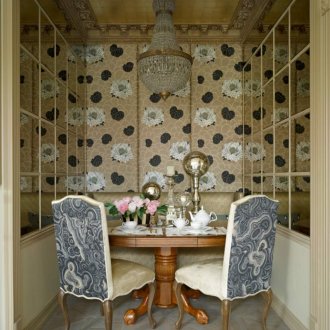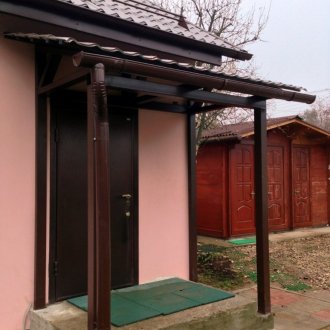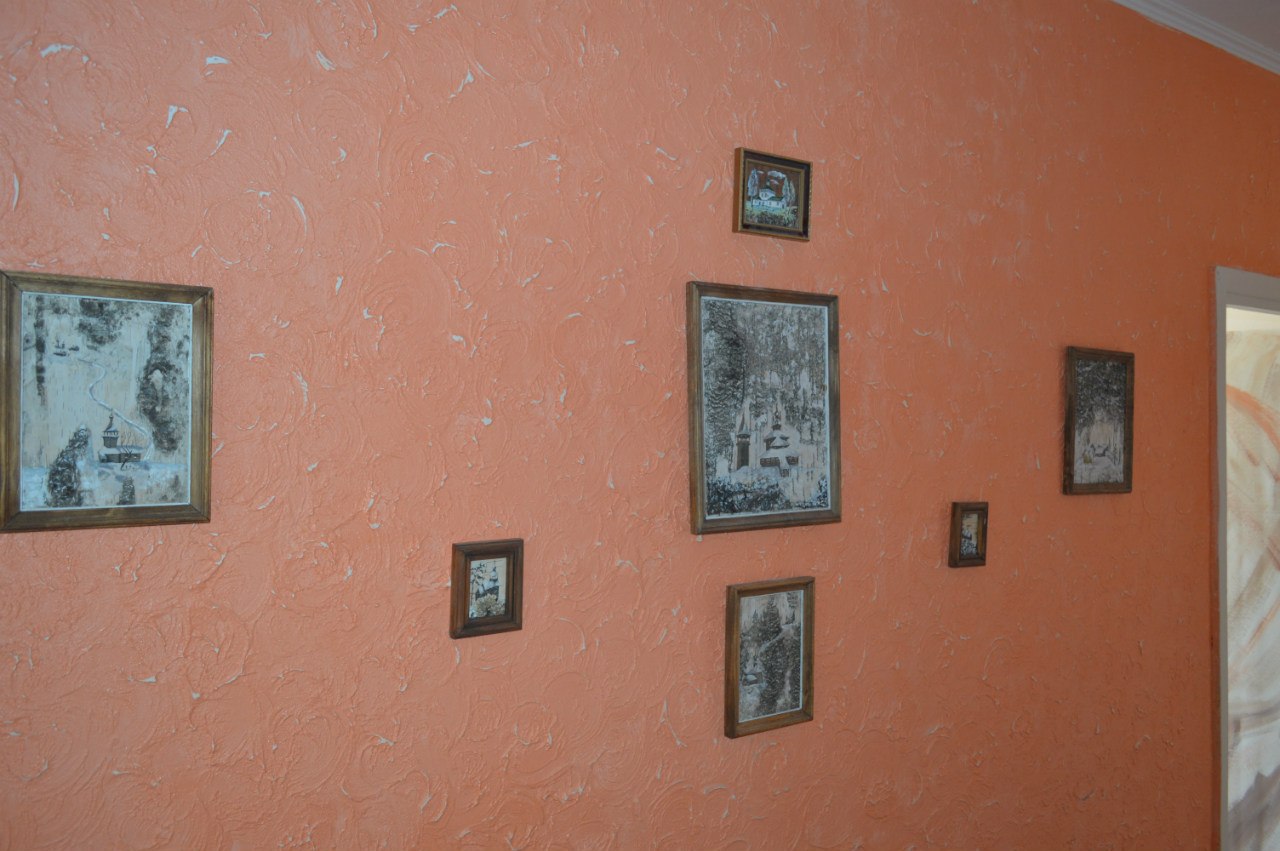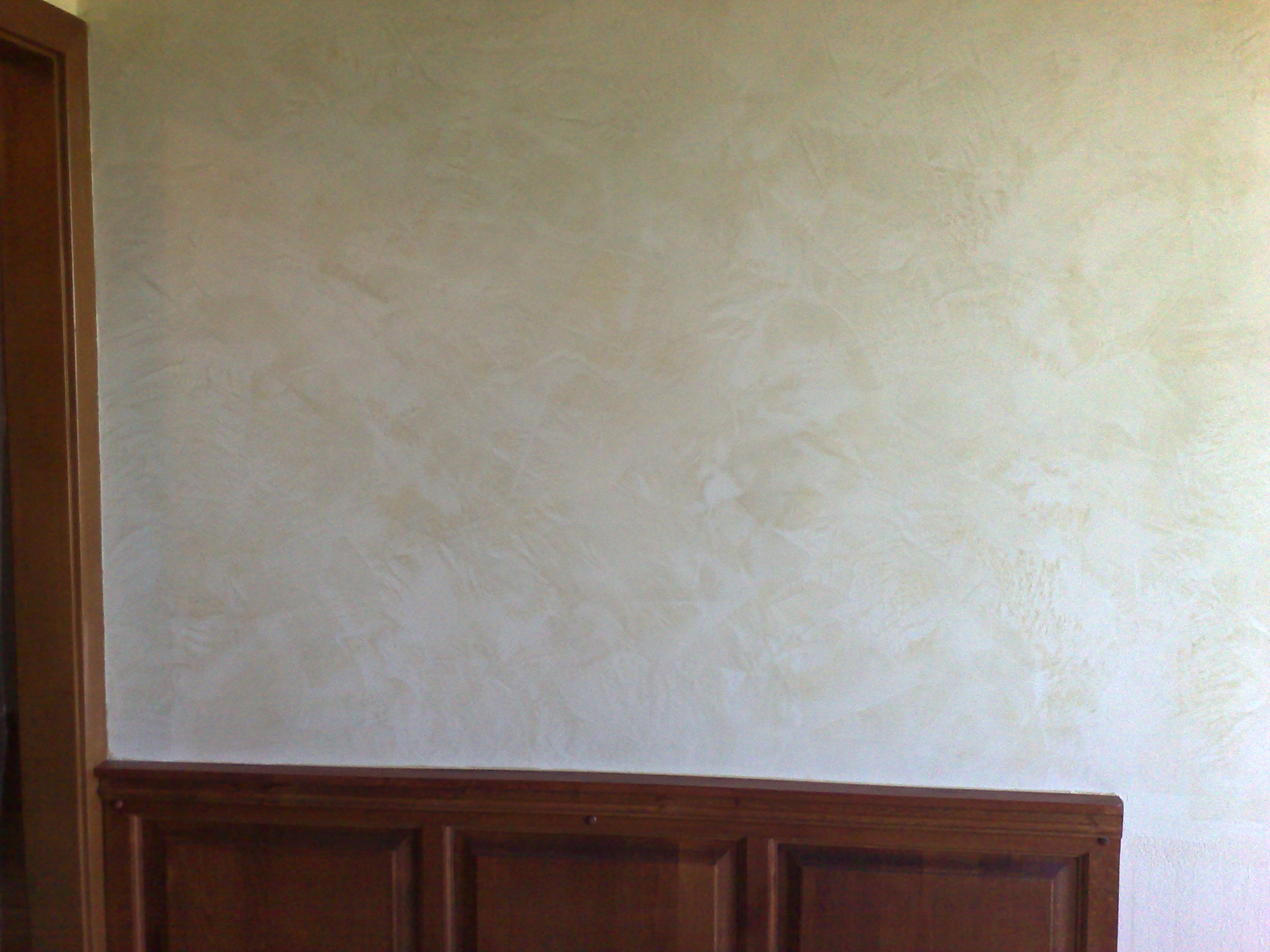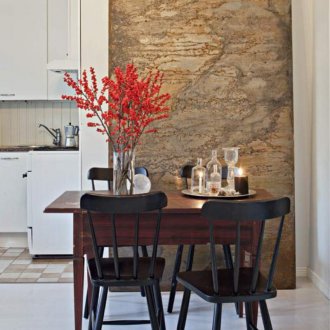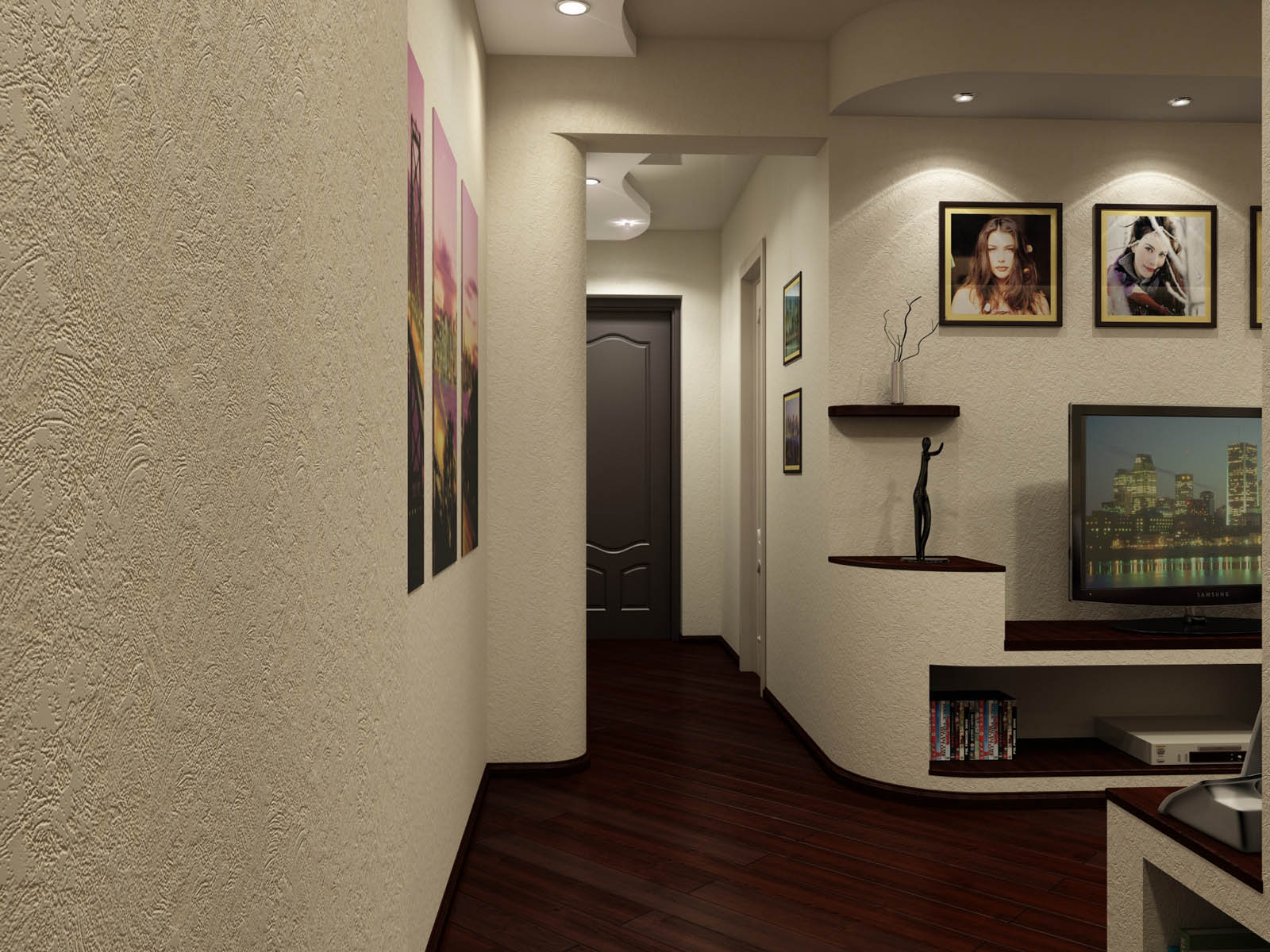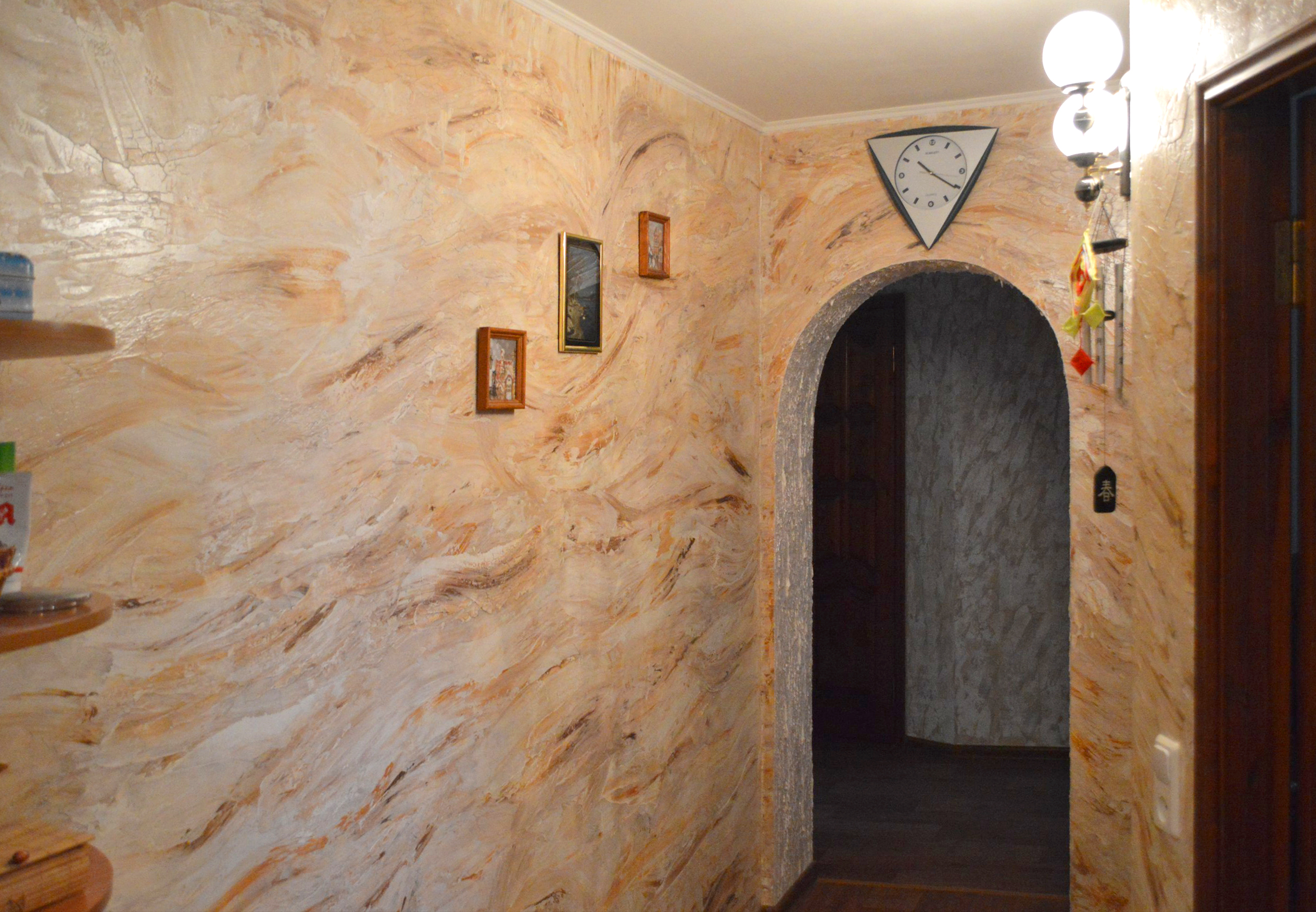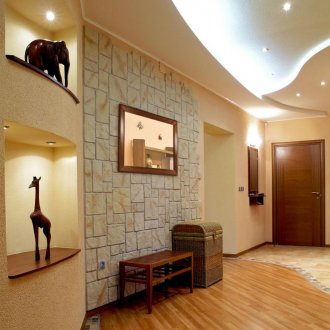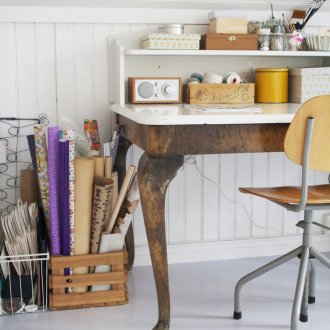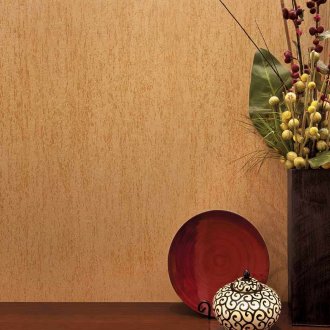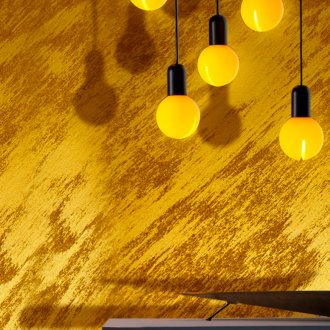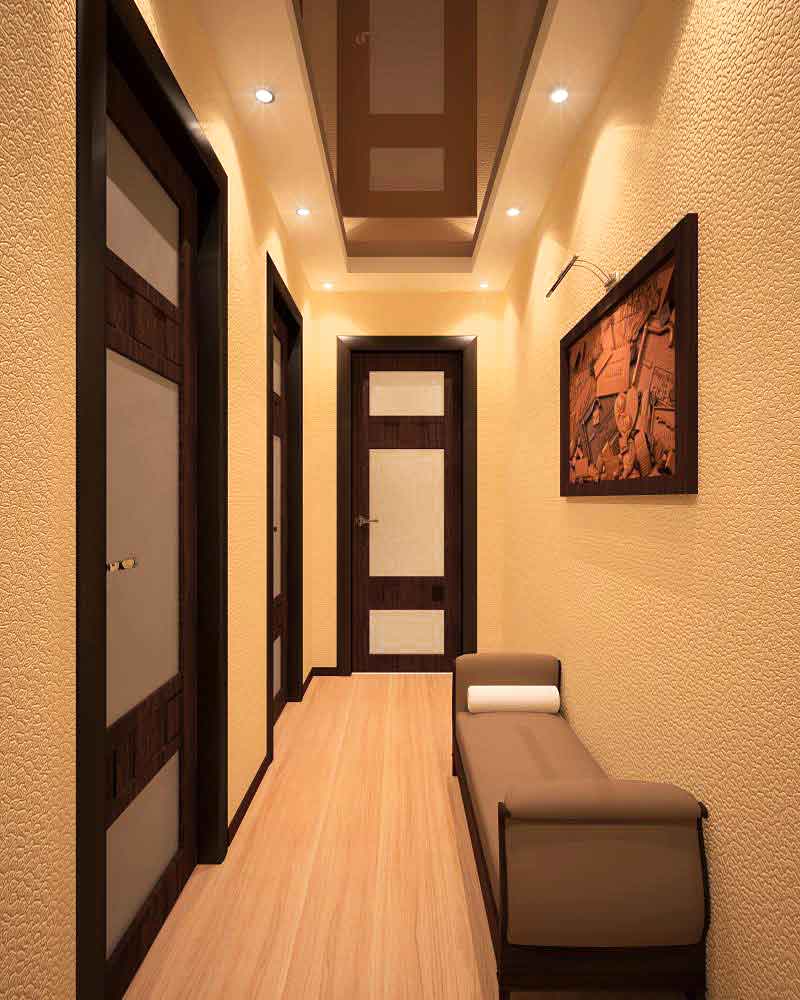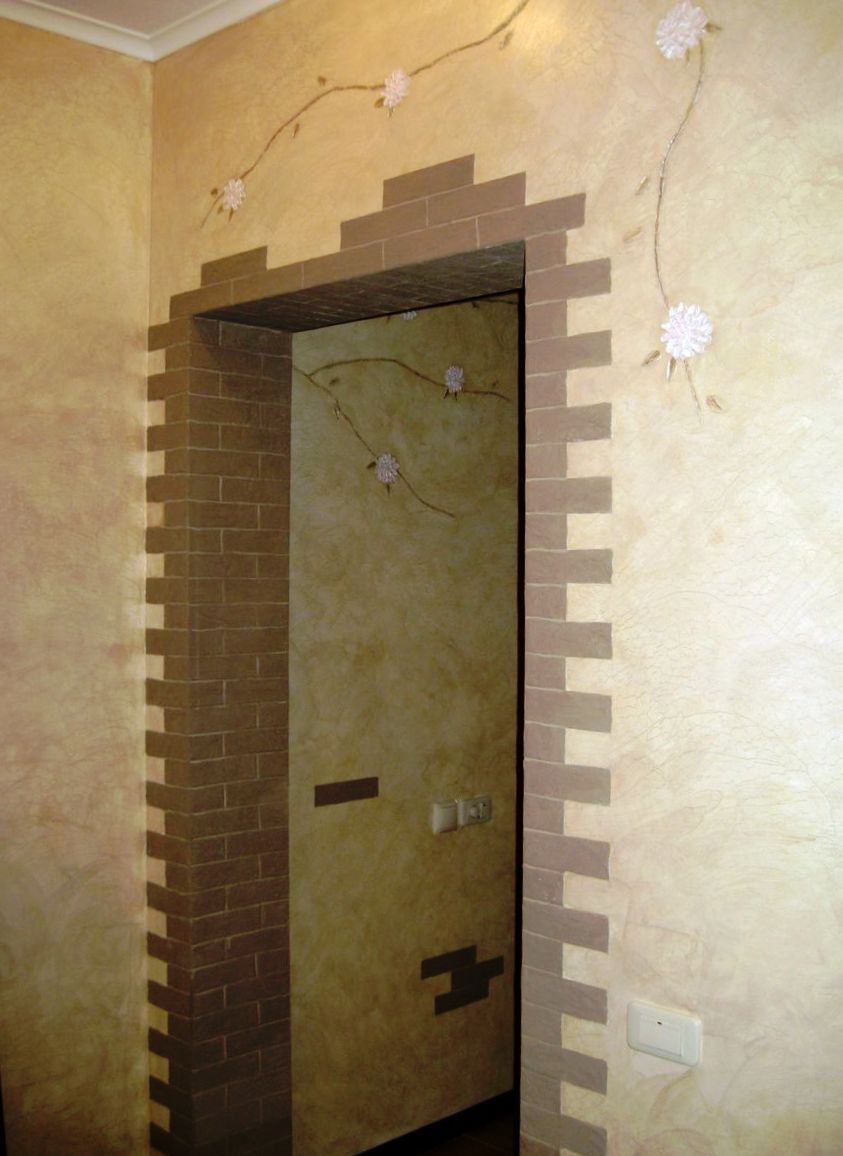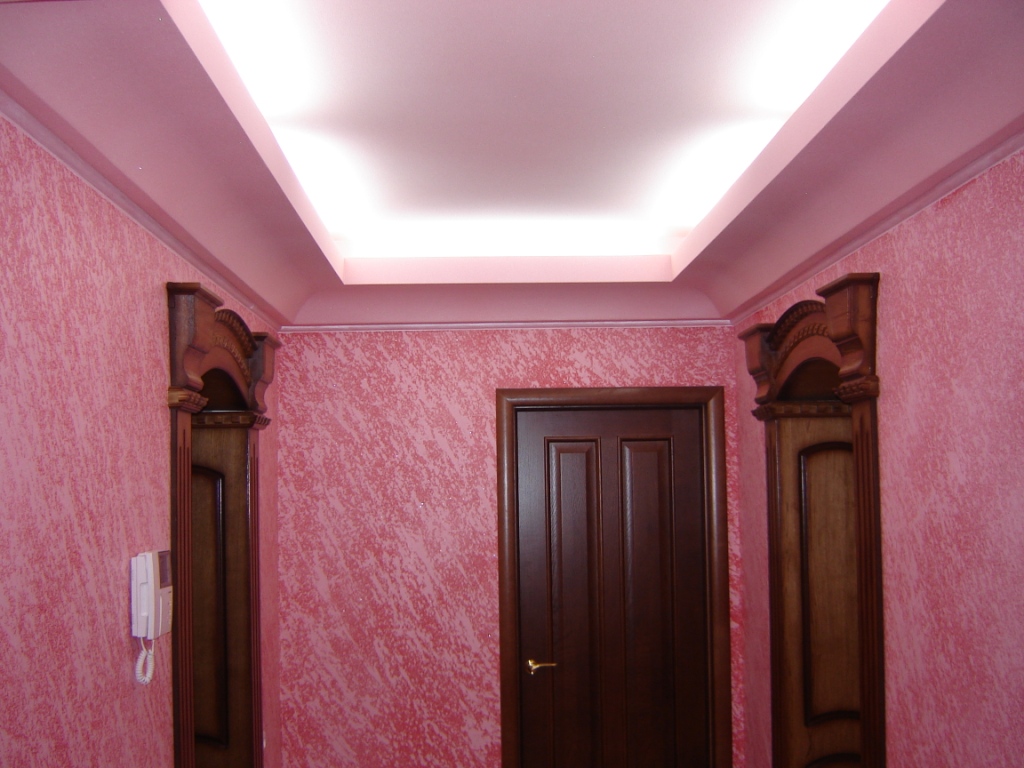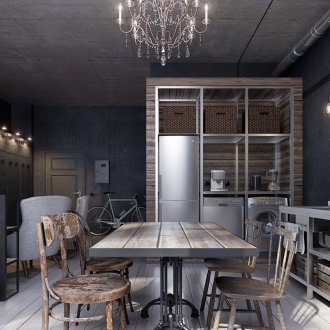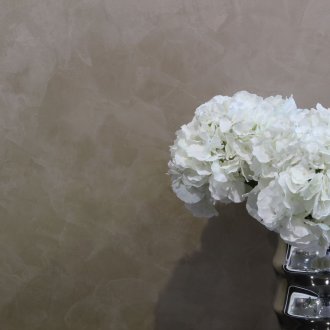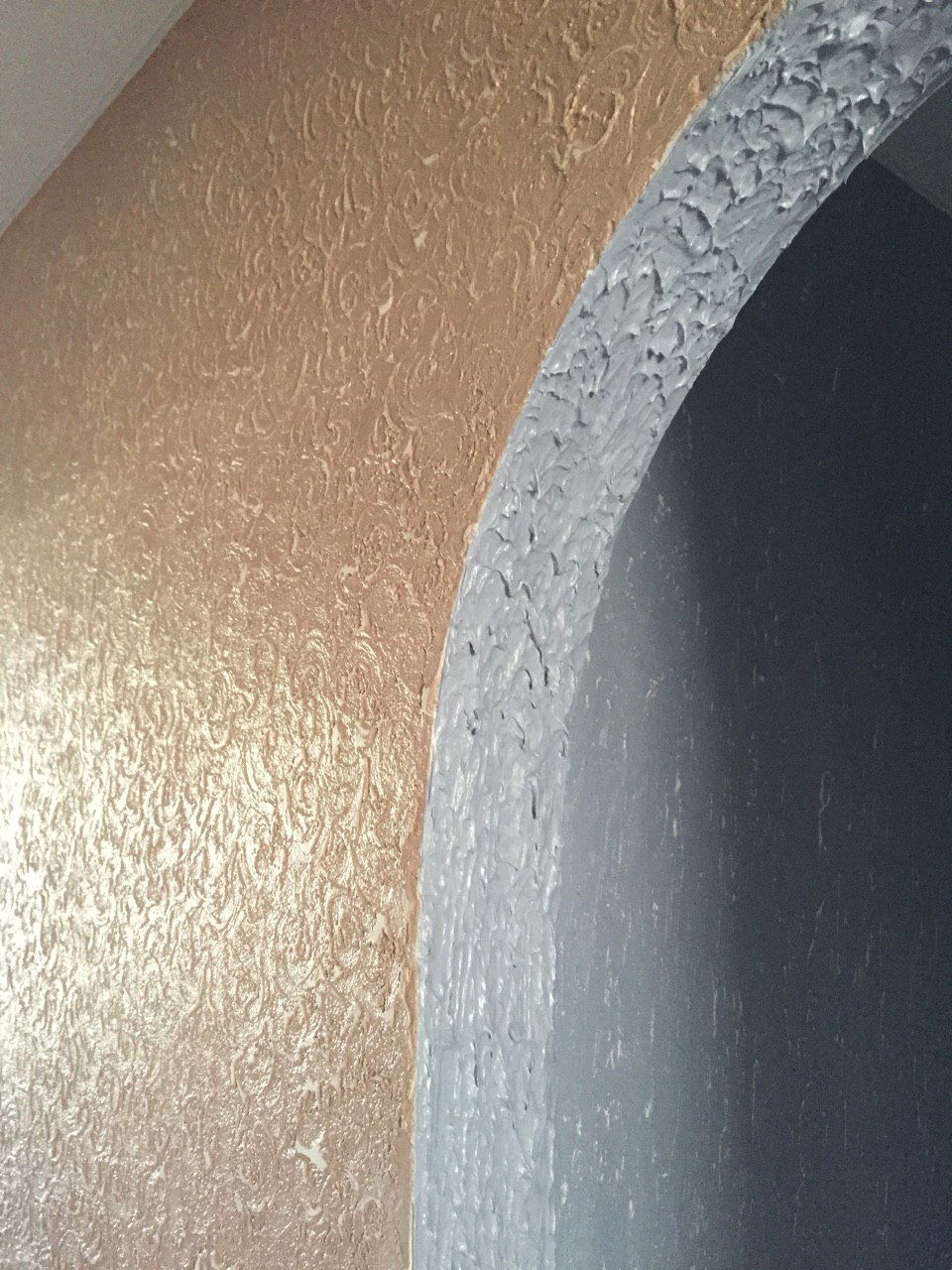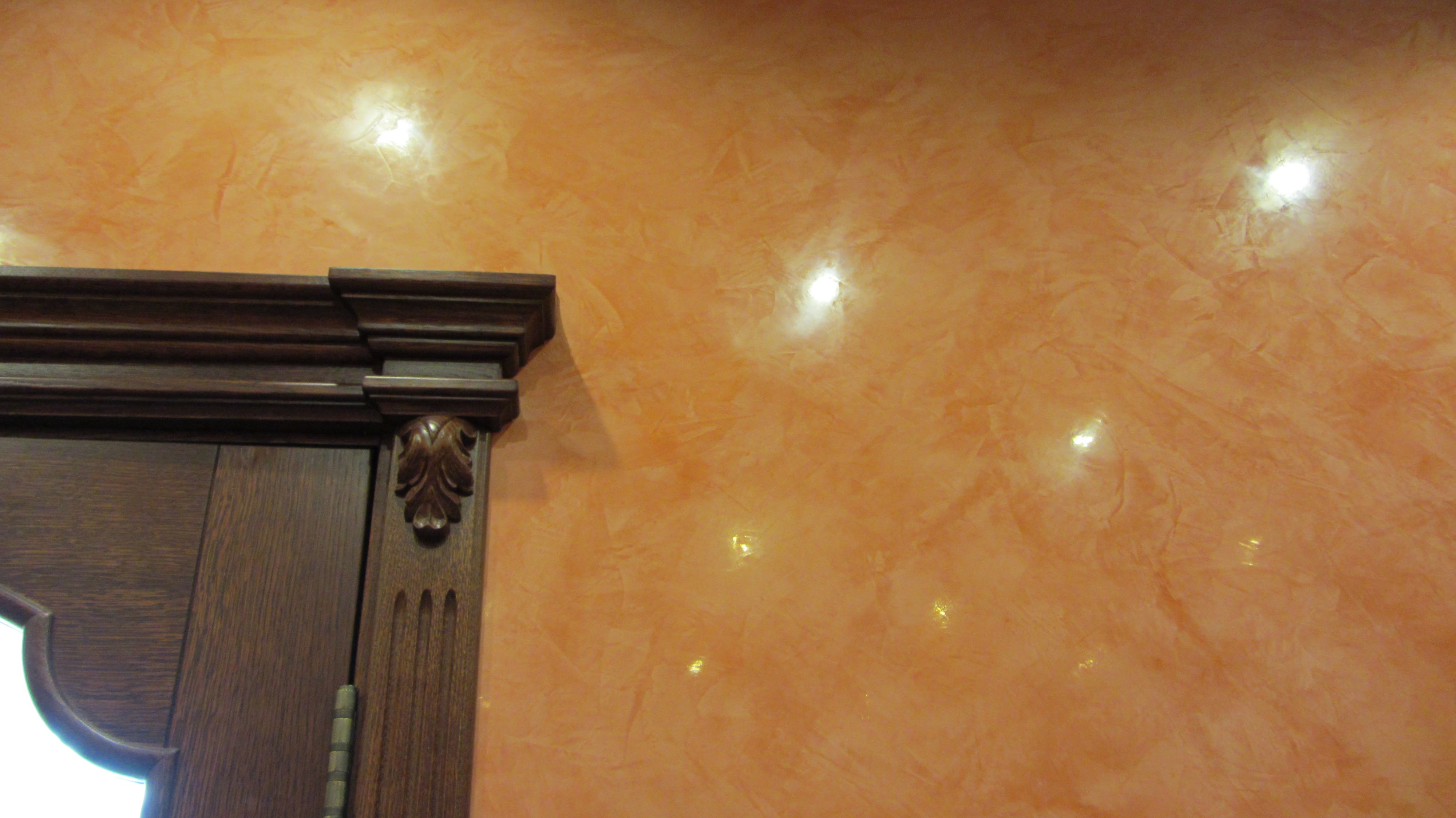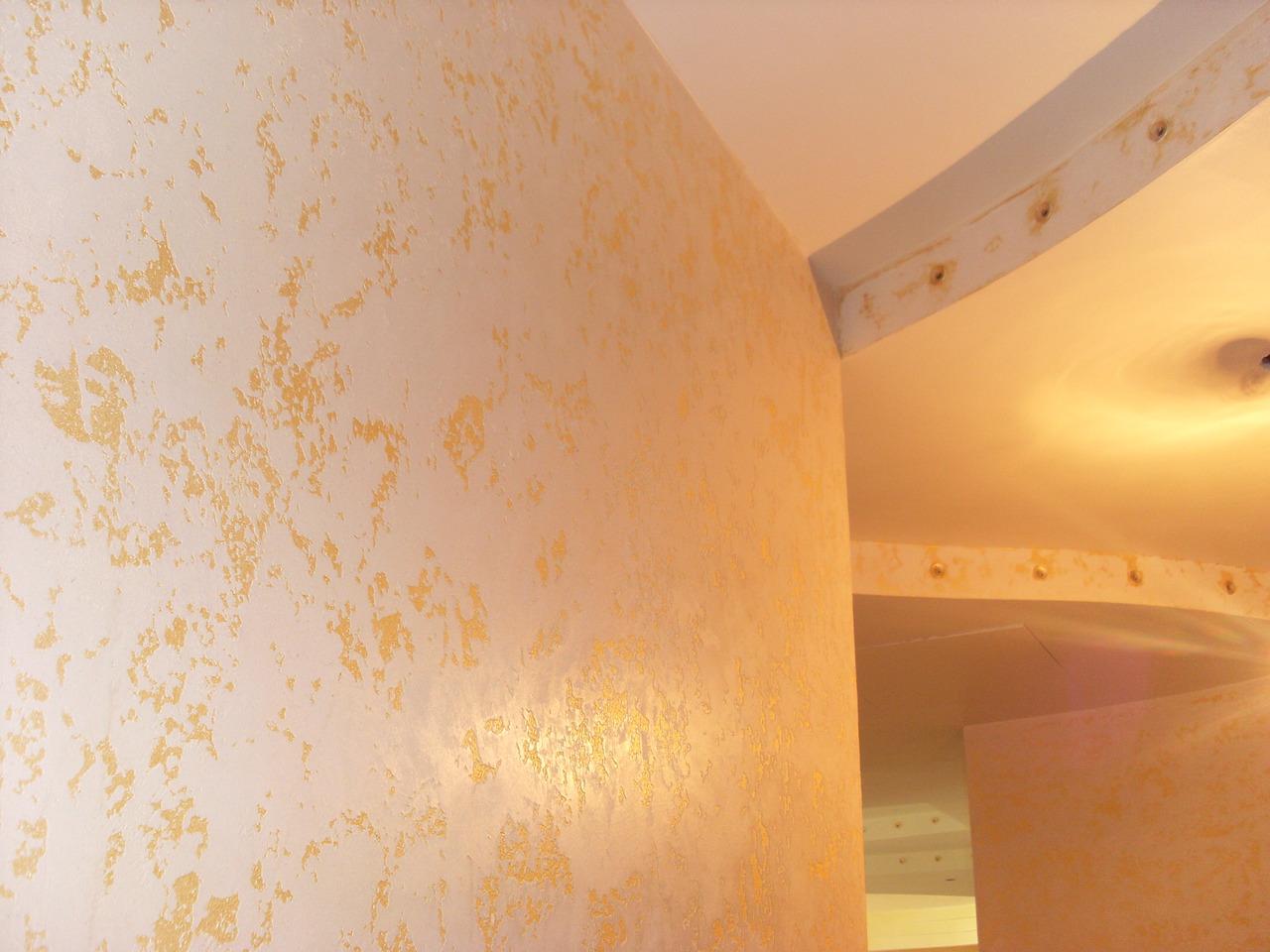Decorative plaster in the corridor: available application techniques (20 photos)
Content
Decorative plaster in the corridor is often used for interior decoration. The use of this finishing method is explained by the presence of a large number of undeniable advantages. It allows you to translate any goals into reality and is acceptable.
Decorative plaster has the ability to create an imitation of fabric and natural surfaces. With its help, you can easily recreate the texture of stone, wood, sandy shore, original patterns and ornaments. Using plaster, you can easily implement various types of fancy finishes on your own.
Wall decoration in the hallway with decorative plaster is carried out in two ways. You can purchase the finished mixture for the manufacture of coatings. Its application is made over the prepared wall. The second method involves creating your own decor using the “finishing plaster”, a variety of techniques and spatulas. Both methods will be an excellent solution for the corridor. The quality of the work done depends on the skill of the person and his imagination.
The main types of decorative plaster
Decorative plaster in the hallway can be of several types. Types of decorative finishes are divided based on the types of materials used. As a rule, a mixture is prepared using crumbs or stone dust. Finished types of wall coverings are classified into the following types:
- Flock coating. The wall is finished using small colored particles, which differ in the presence of a wide color gamut. The mixture is applied to the adhesive surface. The result is an attractive, rough surface. Such an original coating can imitate stone chips, suede, velor. It is very effective and pleasant to the touch.
- Venetian stucco in the interior. Its creation is based on the use of marble chips. With its help, you can recreate the complex texture of marble.
- Use liquid wallpaper. This version of the finished coating makes it possible to decorate the walls of the hallway in a short time. Dilution of the dry mixture is carried out using water. It is easy to apply and remove if desired.
- Structural plaster. It helps to realize a relief surface based on the use of granules of various sizes, pebbles and wood fibers. As a result of the work, the surface can be tinted to any palette.
Any of the above finishing methods can be an excellent solution for the corridor, which makes it possible to create a reliable, durable and high-quality coating.
Subtleties of application
Applying decorative plaster for hallways involves a series of certain manipulations that contribute to providing a high-quality result. Before applying the mixture, you must carefully study the instructions for dilution on the packaging. You must make sure that the cover is suitable for your hallway.
Then you need to prepare tools and materials for work. Regardless of the type of plaster you choose, tools like spatulas, sponges, brushes, a container, sandpaper, rollers, and a construction mixer will certainly come in handy.The rest of the toolbox varies depending on the type of finish chosen.
Special attention must be paid to the competent selection of primers for walls. Before applying the plaster to the wall, it must be primed. This will remove all irregularities from the surface.
As a rule, for the preparation of the wall, an acrylic primer is preferred. If you purchase a ready-made mixture, you can check the information on whether a suitable primer is available.
Plastering walls implies compliance with certain rules. If the plaster mix incorporates large particles, then it is advisable to apply it with your own hands. Liquid plaster compounds must not be diluted with water. Water-based plasters are environmentally friendly. But they, unfortunately, are very often subject to temperature changes and various damages. Marble or Venetian plaster is also applied manually. The fact is that the structure of marble is very fragile. When buying a finished mixture, carefully read the expiration date. If it has expired, then even the most moisture-resistant mixture will be applied to the surface poorly.
If you carefully observe all the subtleties and tricks of the application, the result of the work will exceed your expectations. Carefully follow the instructions for applying plaster, and then you can make a stunning decor for the hallway with your own hands, even with a little practical skills.
The technique of applying decorative plaster
The procedure for applying decorative plaster is creative and painstaking. There are no strict rules for working with this material. It is extremely important to correctly finish the plaster. The main purposes of the finish are as follows:
- Priming the walls. The implementation of the final leveling of the surface, removing scratches from the spatula and any notches. The finish layer provides the formation of a surface plane, which implies the final alignment and filling of all the cracks on the wall.
- Providing reliable surface protection against moisture and other factors. The finishing surface takes on the main burden from the negative environmental factors. In this regard, it is important that this coating is high-quality and durable.
- The implementation of the implementation of decorative reliefs and textures. The finish coating, in addition to the protective function, performs a decorative role.
Decorative plaster, having read the information in advance, you can apply it yourself. This work consists of the following steps:
- Cleaning the wall of dirt, removing dust. Next, leveling the wall surface is carried out based on the use of ordinary putty. The soil surface is allowed to dry completely.
- Plastering on the finished surface using various technologies. Prepared mixture can be applied with various tools, depending on the chosen technique. So the coating of a uniform rough structure is formed as a result of the implementation by the master of light, small movements in a circle. The coating with the bark beetle structure suggests the presence of vertical horizontal or cross grooves. Various types of textures can be easily created using sand or lime coatings.
Types of textured drawings based on the use of decorative plaster
To create the desired textured pattern, you must use a variety of application methods. The “wave” texture is applied to a previously wiped and fresh surface. The area is wetted with water, and then the composition is carefully applied with strips. Strips can be straight or wavy.
Textured plaster such as boulders is popular. It involves applying to the soil layer a plastic solution of the desired color, which is leveled with polyurethane.The surface is brushed with brushes at an angle of 90 degrees.
The texture of "travertine" involves the application of a multi-colored solution by throwing it to the surface. Then smoothing is carried out with a spatula or polyurethane.
The fur coat technique is created by spraying or pouring a mixture of a certain color through the net. The diameter of the mesh cells should be approximately one centimeter. The mesh is pulled over a frame that leans against the ground. The mixture is thrown onto the frame in small portions with a spatula.
There are many ways to apply decorative plaster on the walls of the hallway. Depending on your individual preferences, you can choose the best option. Decorating the corridor with decorative plaster can be done independently.
